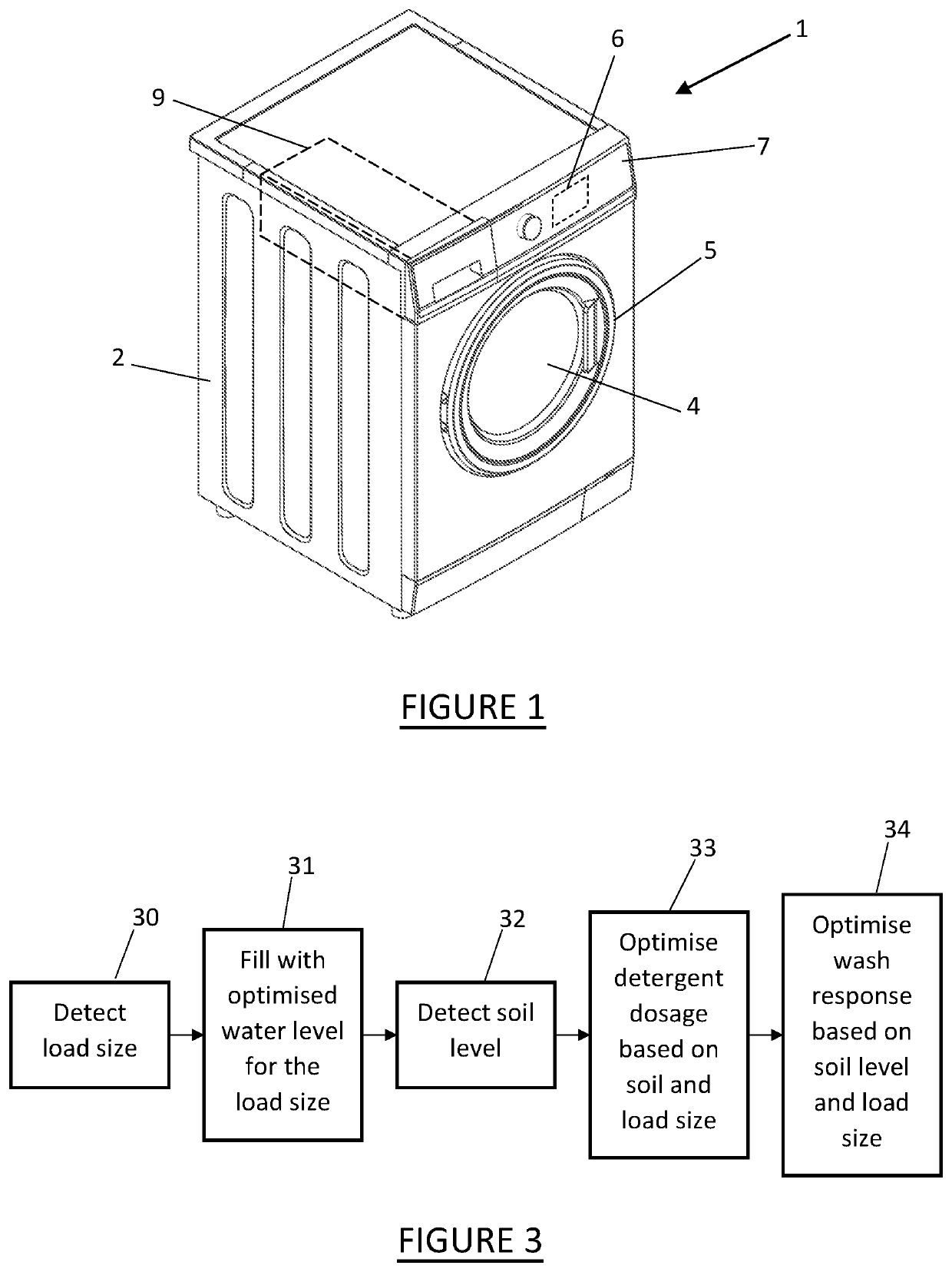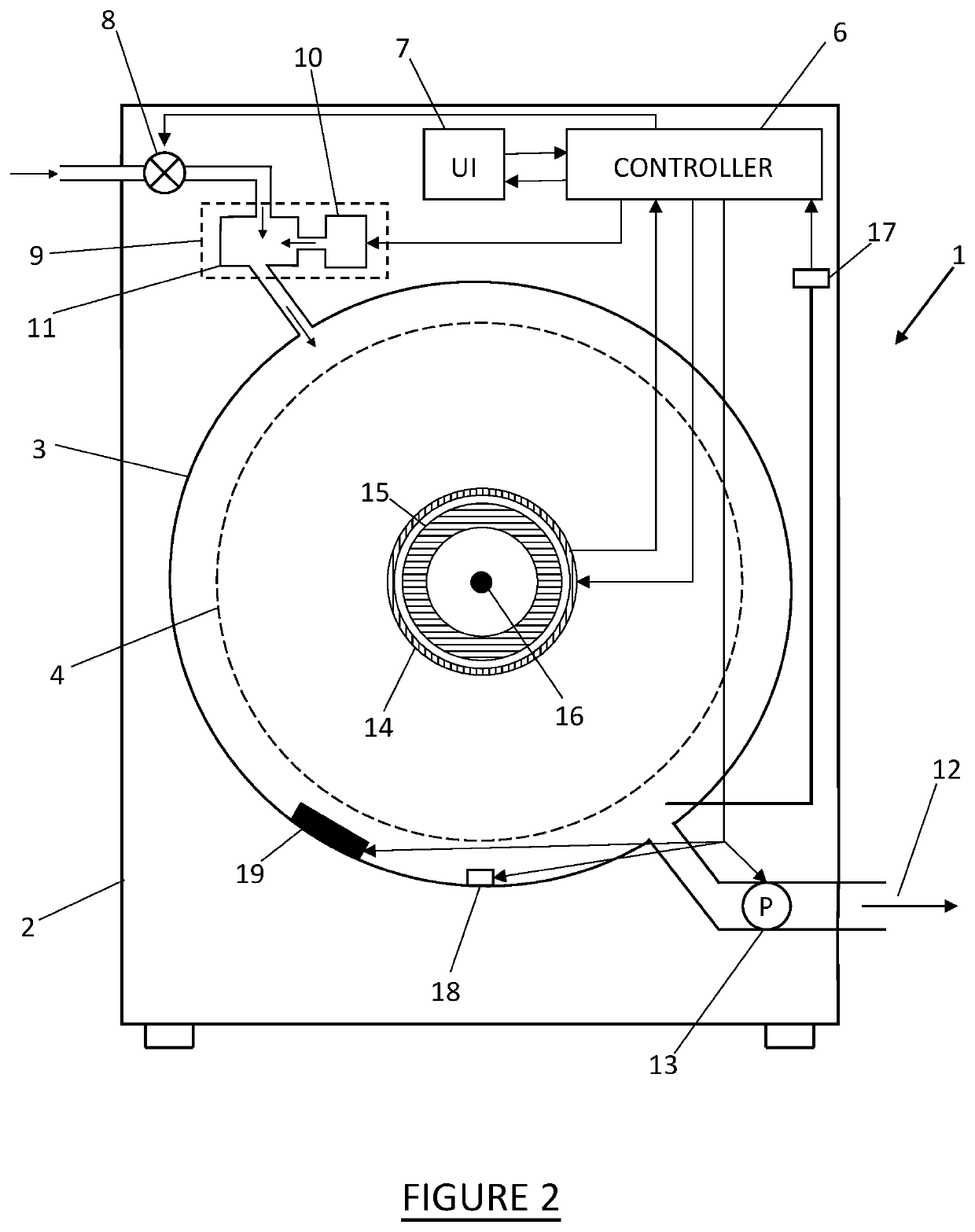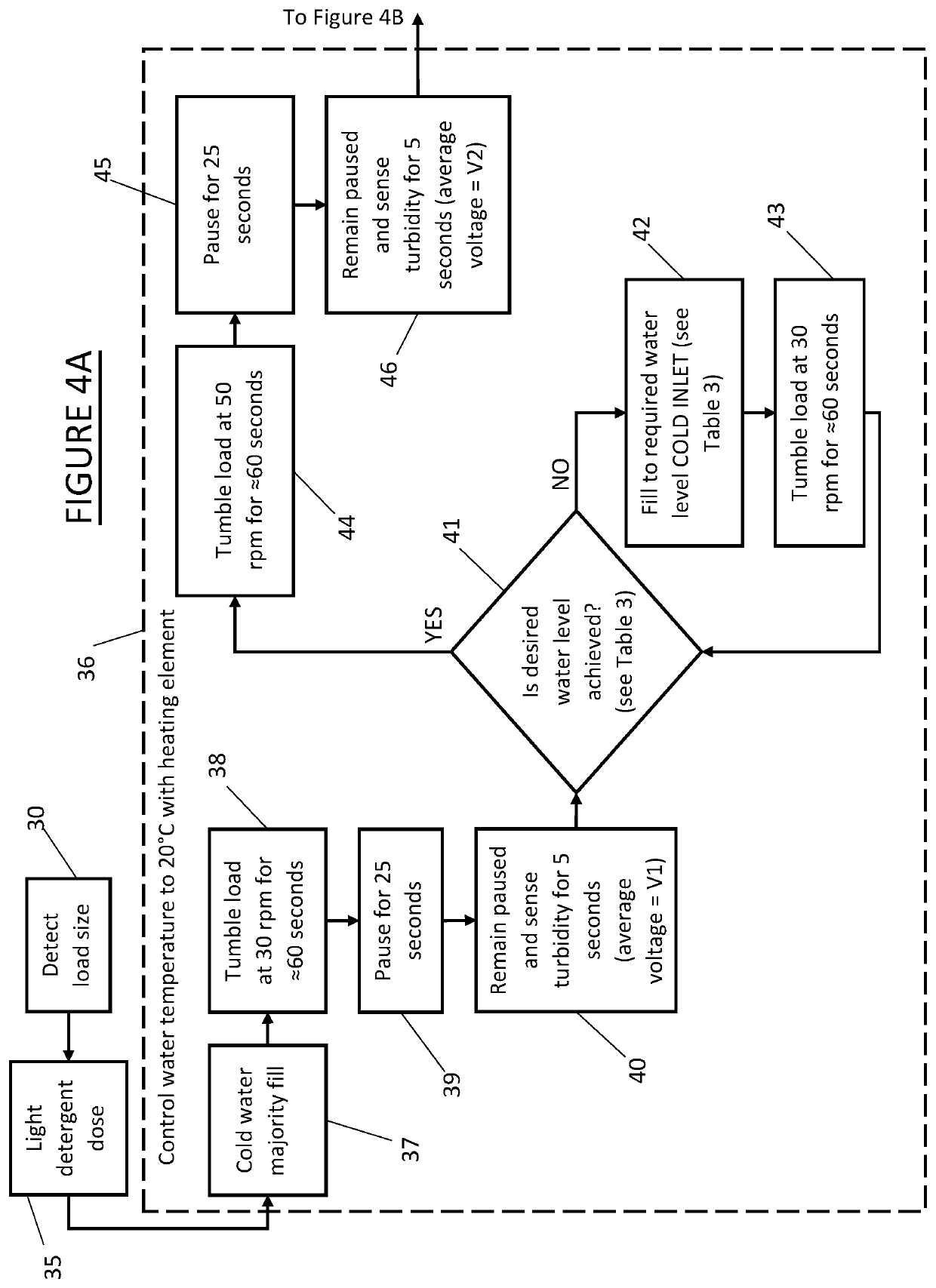Laundry load soil level detection system
a detection system and soil technology, applied in the field of laundry machines, can solve the problems of not being able to automatically dispense an appropriate amount of detergent, unable to enable the use of suitable wash parameters for an entire wash cycle, and unable to achieve the reduction of the amount of detergent, etc., to achieve the effect of minimising/optimising energy us
- Summary
- Abstract
- Description
- Claims
- Application Information
AI Technical Summary
Benefits of technology
Problems solved by technology
Method used
Image
Examples
Embodiment Construction
[0072]A laundry washing machine 1 such as that shown in FIGS. 1 and 2, as is well known, includes an outer cabinet or “wrapper”2 mounted within which, by a suitable suspension system (not shown), is a generally cylindrical, fixed (non-rotating) outer tub 3 for containing washing liquid. Within the outer tub 3 a generally cylindrical, rotatable perforated drum or spin tub 4 is mounted for holding a load of laundry, such as clothing, for washing. Access to the drum for loading and unloading the drum 4, in the case of a front-loading laundry machine, is via a door 5 mounted to cabinet 2. The outer tub 3 may be formed from a plastics material and, in the case of a front-loading laundry washing machine as shown, the outer tub may be formed in two axially separate halves which are subsequently sealed together about the drum. Although FIG. 1 illustrates a front-loading (or “horizontal axis”) laundry washing machine, it should be understood that the soil level determining system of the pres...
PUM
 Login to View More
Login to View More Abstract
Description
Claims
Application Information
 Login to View More
Login to View More - R&D
- Intellectual Property
- Life Sciences
- Materials
- Tech Scout
- Unparalleled Data Quality
- Higher Quality Content
- 60% Fewer Hallucinations
Browse by: Latest US Patents, China's latest patents, Technical Efficacy Thesaurus, Application Domain, Technology Topic, Popular Technical Reports.
© 2025 PatSnap. All rights reserved.Legal|Privacy policy|Modern Slavery Act Transparency Statement|Sitemap|About US| Contact US: help@patsnap.com



